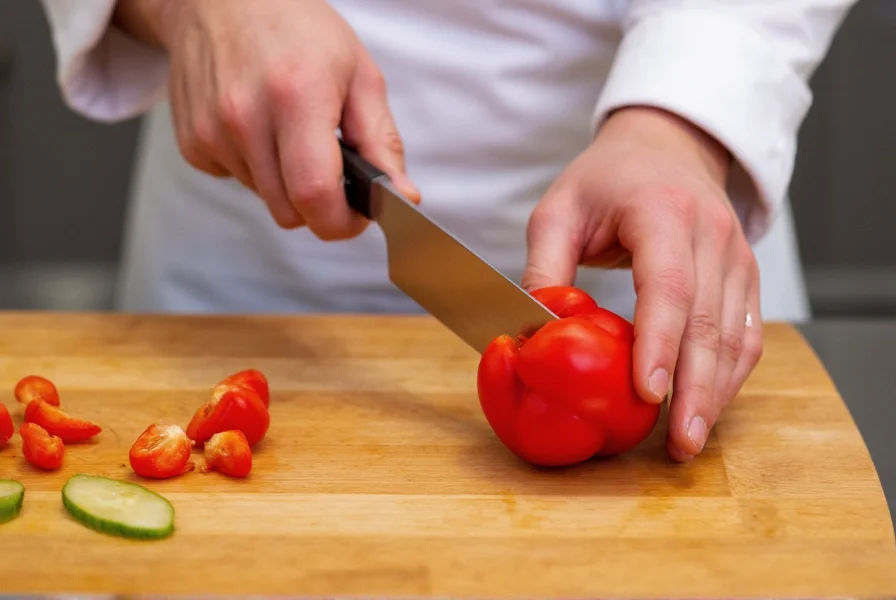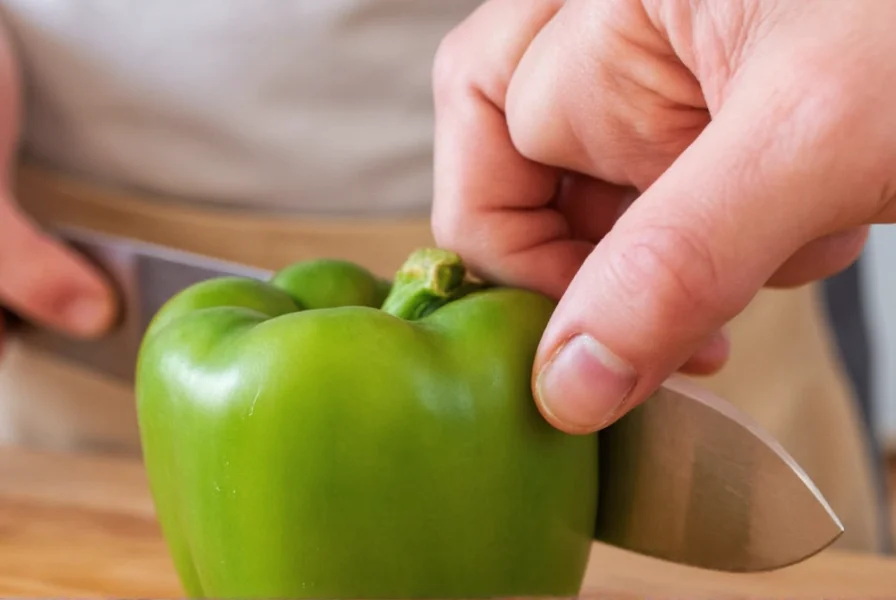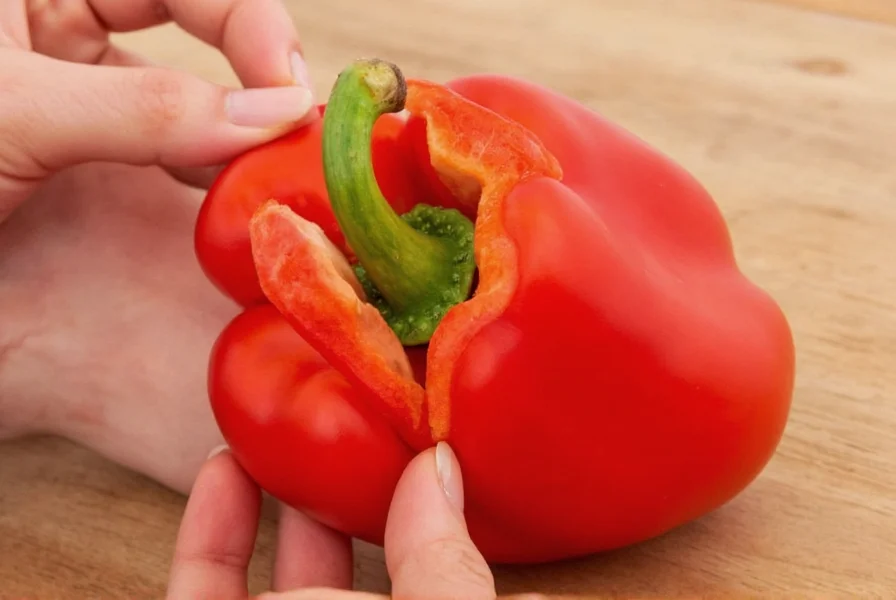Cutting peppers properly is essential for both kitchen safety and culinary success. Whether you're preparing bell peppers for a stir-fry or handling fiery habaneros for salsa, using the correct technique prevents accidents and ensures uniform pieces that cook evenly. This comprehensive guide covers everything you need to know about cutting peppers safely and efficiently.
Essential Tools for Cutting Peppers
Before you begin, gather these basic kitchen tools:
- A sharp chef's knife (8-10 inches) - dull knives require more force and increase slip risk
- A stable cutting board (wood or plastic)
- Cutting gloves (especially important for hot peppers)
- A small bowl for seeds and scraps

Step-by-Step Pepper Cutting Technique
Follow these steps for the most efficient and safest way to cut any pepper:
- Wash and inspect - Rinse peppers under cool water and check for blemishes
- Stabilize the pepper - Place it upright on your cutting board
- Remove the top - Slice horizontally just below the stem
- Cut into quarters - Place the pepper flat side down and slice vertically into four sections
- Remove seeds and membranes - Lay each section flat and scrape away seeds with your knife
- Position for cutting - Arrange sections with the curved skin side down
- Make your cuts - Slice into strips, then dice as needed for your recipe
Special Considerations for Different Pepper Types
While the basic technique remains consistent, certain peppers require specific handling:
| Pepper Type | Special Handling Tips | Cutting Purpose |
|---|---|---|
| Bell Peppers | No special precautions needed; membranes are edible | Ideal for dicing in salads or slicing for fajitas |
| Jalapeños/Serranos | Wear gloves; avoid touching face; work in ventilated area | Thin slices for nachos or fine dice for salsas |
| Habaneros/Bhut Jolokia | Double gloves; consider eye protection; minimal handling | Very fine mince for extreme heat applications |
Safety Tips When Cutting Peppers
Safety should always be your top priority, especially with hot peppers:
- Always cut away from your body to prevent injury if the knife slips
- Use the claw grip with your non-knife hand to protect fingers
- Never try to catch a falling knife - let it drop
- Wash hands thoroughly with soap after handling hot peppers
- If pepper juice contacts skin, use milk or oil to neutralize capsaicin
- If pepper juice gets in eyes, flush with water for 15 minutes

Advanced Cutting Techniques
Once you've mastered the basic technique, try these specialized methods:
How to Slice Peppers for Fajitas
For perfect fajita strips, cut bell peppers lengthwise into ¼-inch thick slices. Keep the natural curve intact for even cooking and attractive presentation. This method preserves the pepper's structure during high-heat cooking.
Efficient Dicing Method
After removing seeds and membranes, stack several pepper sections. Make lengthwise cuts about ¼-inch apart, then rotate and make crosswise cuts for uniform dice. This professional technique saves time when preparing large quantities.
Julienne Cutting for Salads
For salads requiring thin strips, cut pepper sections into ⅛-inch strips. This creates delicate pieces that distribute evenly throughout greens while maintaining texture.
Common Mistakes to Avoid
Even experienced cooks make these pepper cutting errors:
- Cutting with a dull knife - Increases slip risk and damages pepper texture
- Leaving white membranes - Especially in hot peppers, these contain most heat
- Improper stabilization - Leads to uneven cuts and potential injury
- Handling hot peppers without protection - Causes skin irritation that can last hours
- Cutting direction that creates waste - Proper technique maximizes usable pepper
Storing Cut Peppers Properly
After cutting peppers, store them correctly to maintain freshness:
- Place in airtight container with slightly damp paper towel
- Refrigerate at 40°F or below
- Bell peppers stay fresh 3-5 days when properly stored
- Hot peppers maintain quality for 2-3 weeks refrigerated
- Freeze diced peppers for long-term storage (up to 6 months)
Mastering Pepper Preparation
Learning the best way to cut a pepper transforms your cooking experience. Proper technique ensures safety, reduces waste, and creates uniformly cut pieces that cook evenly. Whether you're a home cook or professional chef, these methods for how to cut bell peppers safely and efficiently will serve you well in any kitchen situation. Remember that practice makes perfect - the more peppers you cut using these techniques, the faster and safer you'll become.











 浙公网安备
33010002000092号
浙公网安备
33010002000092号 浙B2-20120091-4
浙B2-20120091-4